Infrared Sauna Calculator —
How Much Does it Cost to Run
An Infrared Sauna?
If you want to enjoy the therapeutic benefits of heat therapy from the comfort of your home, an infrared sauna might be a cost-effective solution. While the upfront cost can be anywhere from $1,500 to $7,000, running an infrared sauna is surprisingly affordable, with the average cost typically ranging between $0.20 to $0.40 per session.
This small running cost unlocks different health benefits, including muscle relaxation, improved circulation, and detoxification—without continually splurging on spa visits.
Read on to learn about the factors influencing these costs and explore energy efficiency tips to maximize your infrared sauna experience without overheating your budget!
Understanding Infrared Saunas

An infrared sauna uses infrared heaters to emit low EMF electromagnetic rays, which are then experienced as radiant heat and absorbed directly by the body's surface. This innovative approach offers a different experience than traditional saunas, which heat the air to increase the room's temperature, indirectly warming your body.
One key difference between infrared saunas and traditional saunas is the operating temperature. While traditional sauna temperatures hover between 150 and 195 degrees Fahrenheit, infrared saunas operate at a lower temperature range, usually between 120 and 140 degrees Fahrenheit.
Traditional saunas also have high humidity levels due to the steam generated by pouring water over hot rocks. In contrast, infrared saunas have much lower humidity levels of 5% to 10%.
This combination of temperature and humidity means you can say goodbye to that suffocating feeling but still get that deep, detoxifying sweat.
Different Types of Infrared Heaters
Infrared saunas are divided into three types: near, mid, and far. Near-infrared rays have the shortest wavelength of around 760 to 1400 nm. This type of infrared sauna is known for its ability to stimulate collagen production and regenerate cells, making it a preferred choice for skin health and anti-aging treatments.
With wavelengths ranging between 1300 nm to 3000 nm, mid-infrared sauna rays penetrate deep into the body's soft tissue, decreasing inflammation, enhancing circulation, and releasing oxygen to reach injured tissues. This wavelength range is adequate for muscle relaxation and improved blood flow.
Far-infrared saunas emit the longest wavelength of roughly 3,000 nm to 0.1 mm and penetrate 4 cm beneath the skin surface, reaching muscular tissues and internal organs. These saunas are renowned for their effectiveness in promoting deep relaxation, stress reduction, and enhanced detoxification. You can even get a full-spectrum infrared sauna like Finnmark FD-2 that combines all three rays for maximum benefits.
Cost Factors for Operating Infrared Saunas

Infrared saunas are much more energy-efficient than traditional saunas. Traditional saunas typically require powerful heaters, ranging from 4kW to 8kW, to induce sweating. These heaters must run for about an hour before being used to reach optimal temperatures.
For example, a moderate-sized traditional sauna with a 6kW heater operating for an hour to heat up, followed by a usage period of another hour at the same energy rate, would consume approximately 12 kWh for a single session.
Since the average electricity rate in the U.S. is $0.16 (this rate can vary significantly by location), the cost of operating a traditional sauna per session will be $1.92. Assuming the sauna is used four times a week, this equates to 16 sessions and $30.72 monthly.
In contrast, infrared saunas have a direct heating mechanism and require virtually no pre-heat time, making them much more energy efficient.
However, the cost also depends on different factors, including:
Sauna Size
The size of the sauna determines the wattage of the heaters installed. Larger saunas need more powerful heaters to cover the increased area and warm the body, increasing overall energy consumption.
Insulation Quality
The quality of insulation significantly affects an infrared sauna's energy efficiency. Saunas with poor insulation require more energy to compensate for heat loss, increasing operational costs. However, good insulation minimizes heat loss, allowing the sauna to maintain its temperature for longer by using less energy.
Usage Duration
The length of time the sauna is used per session also affects the cost. While infrared saunas heat up almost instantly and directly warm the body, extending the session duration beyond the typical 20 to 30 minutes will still increase the operating cost.
Additionally, frequent use, such as daily sessions, will accumulate higher monthly costs than using the sauna once a week.
Electricity Costs for Infrared Saunas

The cost of an infrared sauna is determined by its power consumption and how long it is in operation. An infrared sauna consumes about 1.6 to 2.4 kilowatts per hour (kWh).
Considering the average electricity cost of $0.16 per kWh, a 30-minute to 60-minute session can cost around $0.25 to $0.48. Assuming the sauna is used 16 times a month, the monthly cost ranges from approximately $4 to $7.68.
Monitoring and Reducing Electricity Consumption
The following are some electricity consumption monitoring and reduction strategies:
-
Keep a log of sauna usage duration and frequency to better understand your consumption patterns.
-
Use a smart plug monitor with your infrared sauna. These devices provide real-time energy usage feedback, making it easier to track and manage.
-
Consider reducing the duration of each sauna session. Even a slight reduction can lead to noticeable savings over time.
-
If possible, improve the insulation of your sauna. Better insulation means less heat loss, reducing the need for prolonged heating.
Installation and Initial Setup Costs

Getting an Infrared sauna isn't just about plugging in a box and sweating blissfully; it involves choosing the right model, possibly tweaking your space, and hiring a professional to set it up.
Here's what you need to know about the costs involved:
-
Purchase Price: Infrared saunas are available at various prices, depending upon size, material quality (such as Canadian hemlock or cedar), and advanced features (think Bluetooth connectivity or ultra-low EMF). Compact models start around $1,500, while spacious luxury versions decked out with the latest tech might run upwards of $7,500.
-
Shipping Costs: Often overlooked in the initial excitement, shipping can sometimes add significantly to your total cost. While some vendors offer free shipping, others might charge a few hundred dollars based on the sauna's size and location.
-
Site Preparation: Before placing the sauna in its designated spot, you might need to make a few adjustments. This means adding insulation, ensuring there's an appropriate electrical outlet, or even just clearing space. These modifications can range from minimal (maybe $50 on supplies if you're doing it yourself) to more considerable ($500 or more), depending on what your space requires.
Setup Costs
This is where you decide whether to roll up your sleeves for a DIY project or to get a professional to ensure everything's up to snuff. If you're handy and enjoy a challenge, you could essentially set up your sauna at no additional cost. All you'll need are some basic tools and a good guide (usually provided by the manufacturer) to set everything up.
Conversely, professional installation offers the convenience and assurance that your sauna will be set up correctly and safely, typically within a day. While this option adds to the initial cost, it also comes with the peace of mind that everything is done right, saving you time and possibly avoiding future issues arising from incorrect setup.
Maintenance Costs

If you want to minimize sauna costs and ensure longevity, keep the following pointers in mind:
-
Your sauna's stability depends on a reliable power source. Proper electrical connections can prevent power surges that might lead to costly repairs.
-
While infrared saunas are generally low-humidity environments, any moisture that does sneak in could damage the wood. To avoid that, keep an eye on humidity levels using a dehumidifier if necessary. This prevention measure will outweigh the cost of wood replacement or repairs.
-
Over time, your sauna wood might develop sweat stains, leading to bacteria and unpleasant odor. Clean it using a sauna cleaner and apply sauna wax to maintain the wood's shine. If you want to save a few bucks, consider using a vinegar and water concoction for cleanup.
-
If your sauna has an air filter, regular cleaning or replacement becomes part of the lore. It's a minor cost—a new filter every year or so will cost between $10 and $50 but will keep the air relatively fresh.
Cost-Effective Usage of Infrared Saunas
The following are some of the best practices to run your sauna most cost-effectively:
-
If your utility company charges variable rates, schedule your sauna sessions during off-peak hours. This little planning hack can reduce your electricity bill without reducing your relaxation time.
-
If you're up for it, make sauna sessions a group activity. Heat for two or more people at once is more energy-efficient than heating multiple sessions.
-
Get an infrared sauna with low EMF (electromagnetic field) ceramic heaters if possible. They are safer and incredibly cost-effective as they evenly distribute warmth while requiring less power.
-
Make sure the door is properly sealed when in use. A draft might not cool you down significantly, but it'll certainly heat up your energy costs as the sauna works overtime to compensate.
-
If your model has windows, ensure they're double-glazed or designed to retain heat. This simple feature can prevent heat loss, keeping those warm vibes inside where they belong.
Maximizing the Value of Your Infrared Sauna Investment
With technological advancement, manufacturers continually find ways to enhance infrared saunas' cost-effectiveness. If you have an outdated model, consider upgrading it to a newer version to enjoy all the health and relaxation benefits without the stress of high operating costs.
At My Sauna World, we have a wide variety of infrared saunas from top-rated brands such as Sun Home Luminar, Golden Designs, SaunaCore, and more. For more detailed information on optimizing your sauna usage or advice on transitioning to a newer model, feel free to contact us, and our trained staff will assist you with inquiries.
SIGN UP. SAVE BIG.
Subscribe to be the first to know about our special monthly sauna sales, sent right to your inbox.

About the Author
Adam Fromson
Adam Fromson, co-founder of My Sauna World, loves saunas and their transformative health benefits. With years of experience exploring sauna culture and its impact on health and wellness, Adam is passionate about helping others discover the life-changing benefits of saunas for themselves.
Let customers speak for us
from 385 reviews
Good communication, easy delivery, easy set up, easy operation, great value. Recommended!
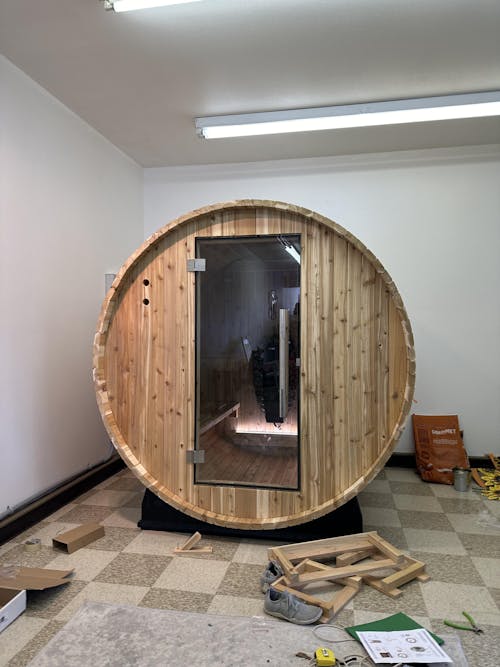
We ordered the 4 person barrel sauna and love it! We wanted a little extra space for the 2 of us/guests and it’s great. We could definitely fit 4 people in it if we needed. We use it every single day. It took about 10 weeks to get here because they build it specifically for the order. Putting the barrel together was fairly easy with 2 people. The electrical and the heater definitely required an electrician to install as we could have not done it alone.
We ordered the biggest heater (harvia spirit 8kw) and it heats up the sauna in about 15 mins inside our 40-50° garage. Overall this style of sauna is hotter and you sweat a lot faster than in an infrared sauna. I truly 10/10 recommend!
Pic is of us in the middle of building it.
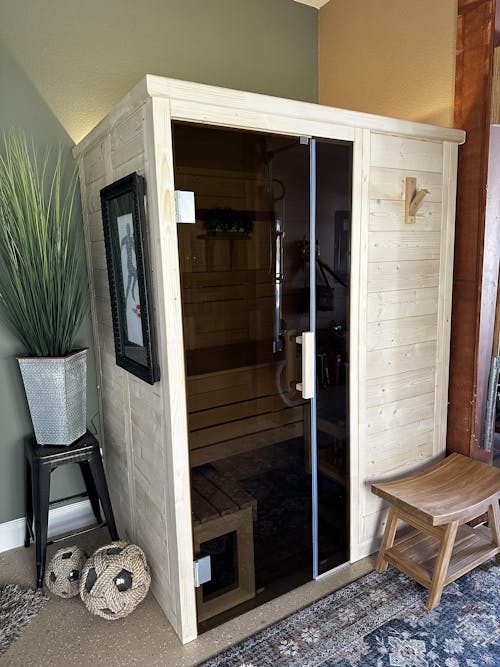
Took me about 6 hours over 2 evenings to assemble almost all by myself. Had a pro run a new circuit from my panel. Very well made and assembly was straightforward. Heater is well sized and reaches operating temperature in under 30 minutes.
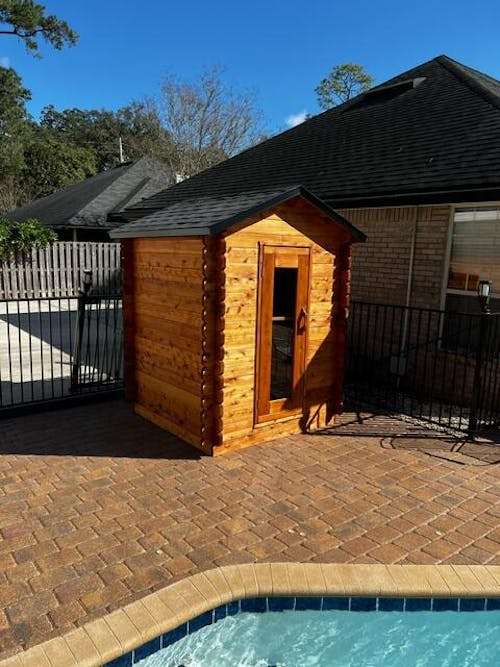
Great sauna very easy to assemble
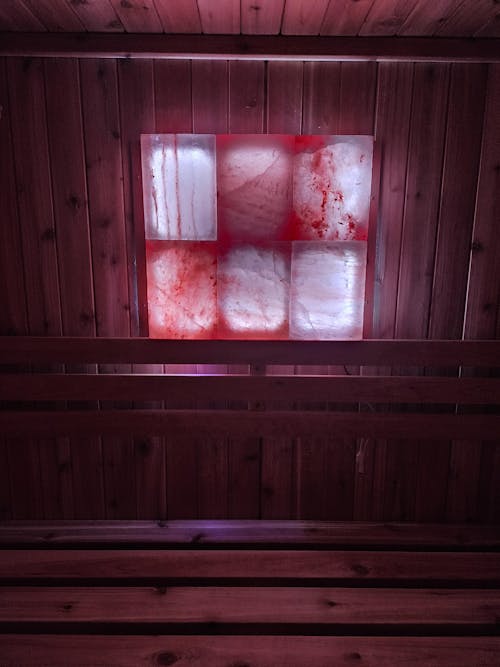
The salt panel was a great addition to our Madison Sauna. It has excellent grain which is accented by the amazing color lights that glow through the panel. Also when you hit the rocks with a splash of water you can feel the heat bounce off the panel. Great addition if you are considering this option.
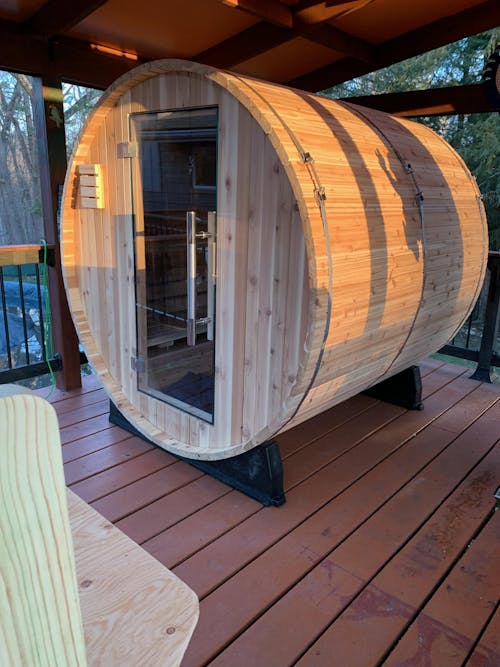
We can say enough about Sauna World there customer support is great! Our Pinnacle Sauna from Almost Heaven is epic.
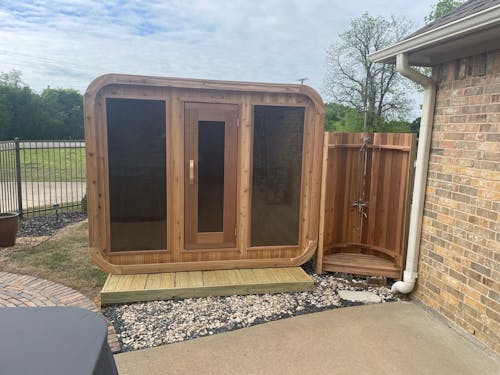
The finish and quality is outstanding and it was quick and easy to assemble.
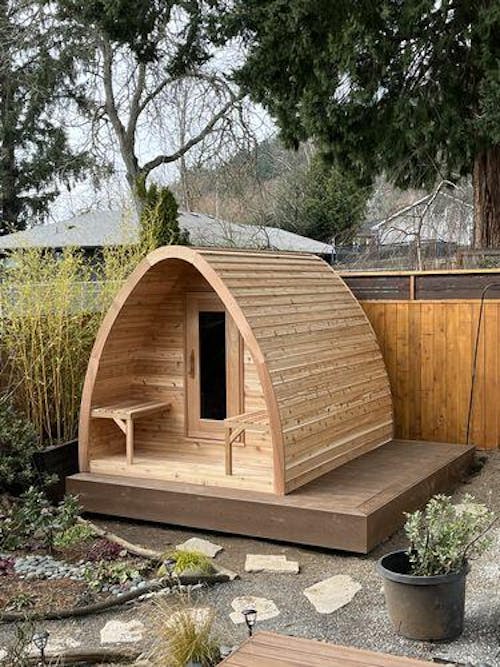
We are thrilled with our mini pod!! It came well shipped and our friend assembled it in 11 hours! Wow! We cannot wait to get healthy and sauna it up!
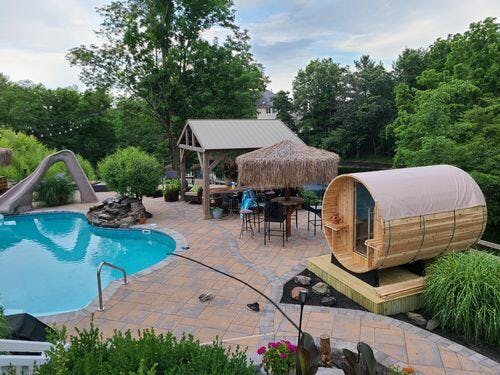
Beautiful sauna!!! Much easier than I expected to assemble, took a total of 4 hours. Can't wait to get warm by the pool on those cool evenings. Customer service was excellent..

Purchased a 2 person Almost Heaven barrel sauna and were delighted with the product. The order process was quick and easy, the sauna arrived on-time, installation was simple, following the provided instructions, and the sauna is extremely high quality. We’ve used it daily for over 2 weeks and quite frankly I don’t know how we lived without it. If I had it to do over again I wouldn’t change a thing... except maybe purchasing a 4 person model to easier share with friends!
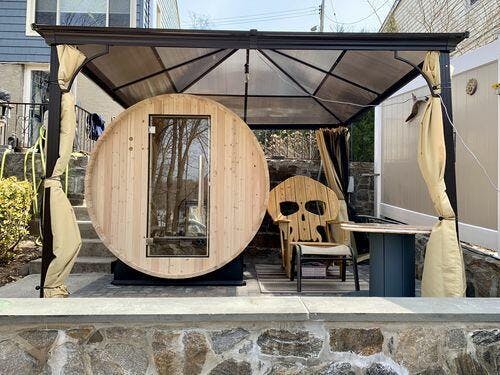
Great Customer Service and a breeze to put together.Excellent shipping and the Sauna is top notch, couldn’t be happier






























